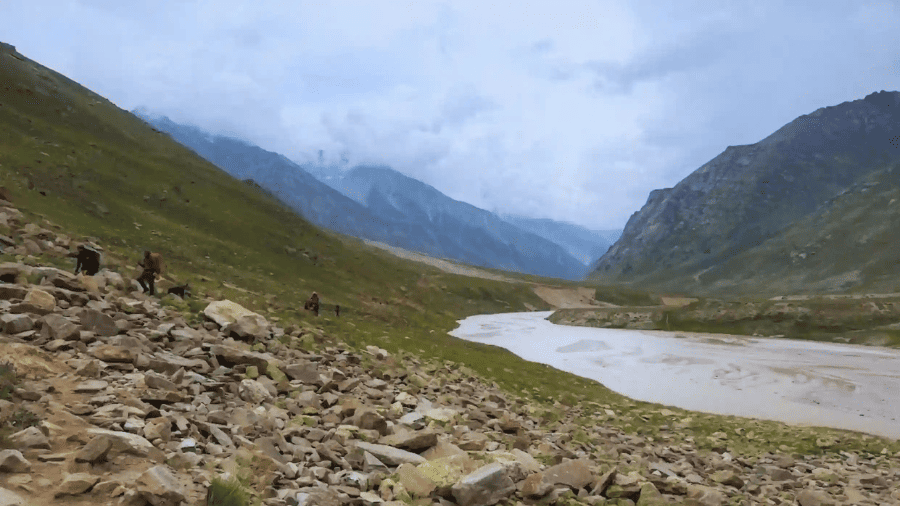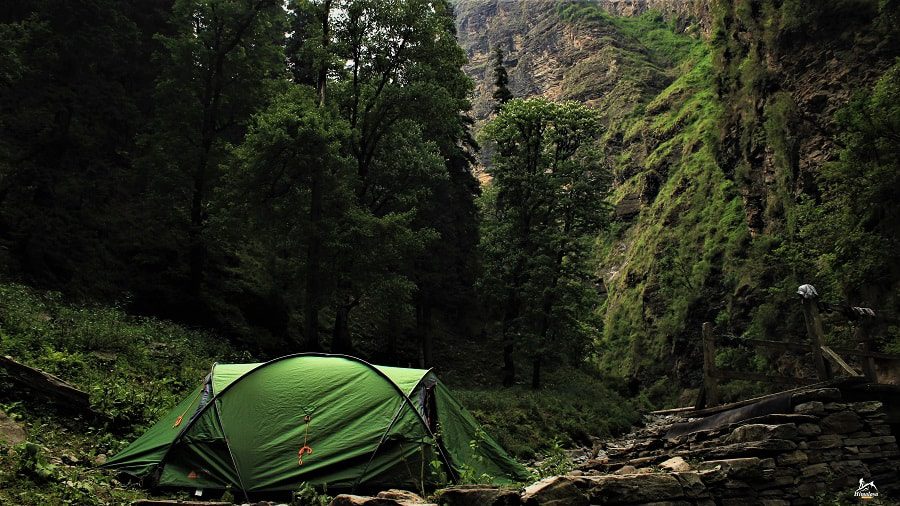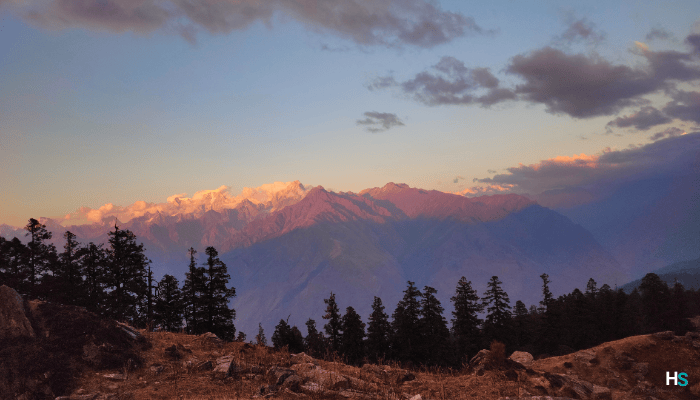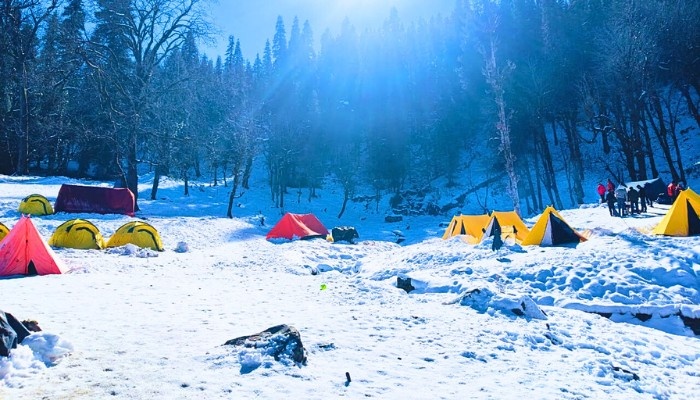
Bali Pass Trek Difficulty Level : Not For Beginners
There isn’t any trekker who hasn’t heard of Bali pass trek! It is one of those treks on the list of every passionate trekker. This is because of the Bali Pass Trek Difficulty, this trek is not just a trek; it’s more akin to an expedition. But, in case you haven’t heard about it, Bali Pass connects Har Ki Dun Valley to Yamnuotri Valley.

The name Bali Pass comes from the ancient tales of Mahabharata and the Hindu scriptures. Bali, meaning the king of monkeys, was the ruler of Kishkindha Mountain and believed to be the defeater of Ravana. However, there are many tales surrounding the mountain and it’s tough to tell for sure.
Because of the challenges involved, embarking on this journey demands physical and mental fitness, along with careful itinerary planning and proper gear preparations. Here are some very real challenges of the trek:-
- It involves a certain degree of danger and Hardship.
- The mighty mountain is at a height of 16,080 ft. Surprisingly, the oxygen level is almost 1/3rd of the normal. As you move up, the air becomes thinner. This, without a doubt, grandly contributes to the Bali Pass difficulty. One needs a day to acclimate to prevent falling ill.
- There’s a lot of snow! Some of the mountains are even snow-covered plus there’s always a little predictability of rain.
- While rivers along the route make it exciting, they also add to the difficulty of the Bali Pass Trek. Often bridges wash off and are broken because of the harsh weather conditions.
- This expedition requires a top-tier fitness level. It is not for beginners, only seasoned trekkers at an optimum fitness level should attempt it.
- In terms of distance, Bali Pass Trek spans approximately 70kms which demands both stamina and endurance.
How to minimize the difficulty of the Bali Pass Trek
The last thing trekkers’ want to be is unprepared. With so many potential dangers, comes preparation for safety. Although avoiding all the Bali Pass trek difficulties isn’t entirely possible, here are some ways in which you can be safer:-
- Pick the right time to trek (Detailed guide given)
- Pick the right team (Himalaya Shelter) and guide. Involving yourself with the right team will not only make it safer but also elevate the experience.
- Make yourself physically and mentally fit. Start by jogging and exercising every day. Aim at building cardiovascular endurance, strength, stamina, and balance.
- Pack the right equipment. Warm, waterproof clothing, sturdy hiking boots, and first aid kits are some of the essentials during this trek. Keep in mind not to overpack.
- Ensure to Acclimatize and stay aware of the symptoms.
- When at crossovers, cross only at designated points and in coordination with the team.
Best time to trek the Bali Pass

There is a very narrow window of time when you can do this trek. The rest of the year, don’t even think about it. May and June during Summer, and September and August during Autumn are the two durations of the year that you can enjoy the fruits of Bali Pass.
The snow starts melting this time, and the sun shines brightly easing the difficulty of the Bali Pass trek. Nature flourishes, and the flora becomes a promising sight for the trekkers. This transitional period is comparatively more reliable and reduces the difficulty of the Bali Pass Trek.
Where should the Bali Pass Trek be started from?

The base camp for the trek is Sankri and is the most suitable starting point keeping in mind what is ahead. We have our very own homestay in Sankri which is an abode for trekkers’. One day’s stay in the base camp helps acclimatize, enjoy the gradual increase in altitude, and prevent AMS. While AMS even gets the best of Trekkers, severe symptoms can be avoided.
There are often questions if the Trek can be started from Yamnuotri. No, It is not advisable to start from Yamnuotri as its steep terrain poses a lot of danger and maximizes the difficulty of the Bali Pass trek. Starting from the wrong point also compromises the experience of the trekker.
Day wise itinerary with altitude gain and distance
- On Day 1, The Bali Pass Trek itinerary includes a drive from Dehradun to Sankri, covering a distance of 190 km in 8 hours.
- On Day 2, the trek starts from Sankri (1,920 m) to Seema (2,560 m) via Taluka (2,050 m), covering a distance of 14 km in 5-6 hours, preceded by a 1-hour drive.
- On Day 3, the trek continues from Seema (2,560 m) to Roiltia or Waterfall camp (3,350 m), covering a distance of 13 km in 6 hours.
- On Day 4, the trek goes from Waterfall to Ruinsara Lake (3,600 m), which is a 4 km trek taking 2 hours.
- Day 5 can be spent exploring Ruinsara Lake or trekking to Thanga, which is 3 km away and takes 1.5 hours.
- On Day 6, the trek goes from Ruinsara Lake/Thanga to Bali Pass Basecamp (4,600 m), covering a distance of 8 km in 7 hours.
- Day 7 involves trekking from Bali Pass Basecamp (4,600 m) to Lower Dhamni (3,200 m) via Bali Pass (4,900 m), which is a 12 km trek taking 9 hours.
- On Day 8, the trek goes from Lower Dhamni to Yamunotri to Janki Chatti (2,400 m), covering a distance of 12 km in 6 hours.
- Finally, on Day 9, the trek concludes with a drive from Janki Chatti to Dehradun, covering a distance of 190 km in 8 hours.
Why the itinerary should align with Physical Health
An itinerary should always align with physical health because if not there will be more bad than good. A well-structured itinerary ensures no overexertion, is aligned with the trekkers’ capabilities, minimizes health risks, and reduces the impact of variables.
Trekking is not just about reaching the destination, it is about enjoying every part of it. This blog is not to scare you from the Bali Pass difficulties but rather for you to be prepared and careful. Rest assured, when you book your trek with Himalaya Shelter, you have a lot less to worry about. Happy trekking!
About Author

Himalaya Shelter
Recent news

23 Dec 2025

20 Dec 2025

18 Dec 2025

16 Dec 2025

10 Dec 2025
Recommended Treks

Cost: ₹45000 | $513
Type: Difficult
Best Time: May to June and September to October

Cost: ₹11,299 | $125.46
Type: Easy
Best Time: Jan | Feb | Mar | Aprill | May | Jun | Sep | Oct | Nov | Dec

Cost: ₹9900 | $114
Type: Easy
Best Time: April to June and September to November





